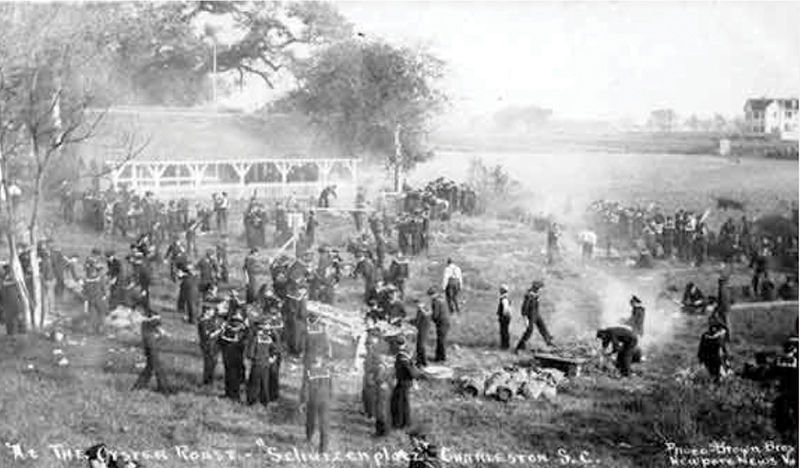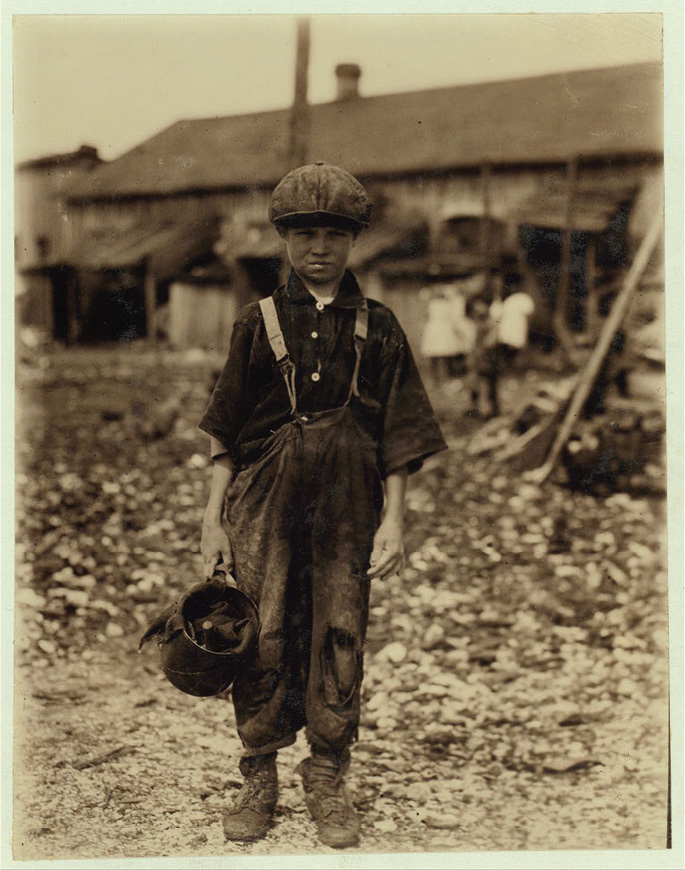Cooking out, Mason style

An oyster roast, hosted for visiting sailors by the German Friendly Society, circa 1910
If you imagine oyster roasts have existed in Charleston since time immemorial, you aren’t alone. After all, Charles Towne was built on the bones of bivalves. White Point, the tip of the peninsula, was deemed so due to its heap of pale shells. Perhaps, too, you’ve seen those great Sewee shell rings, or middens—no doubt the remnants of Native American feasts nearly 4,000 years ago—and surmised that the colonists, being sociable people, emulated similar alfresco festivities.
The problem with this vision of culinary antiquity is that no record exists of an oyster-centered public gathering prior to 1897, though many other open-air cookouts (featuring goat, mutton, beef, fish, chicken, as well as the whole hog), fish fries, stews (of pine bark, catfish, red horse), and bogs were documented during that time. Oysters were indeed harvested then; Charlestonians had been dining on notable fish supplier Charles C. Leslie’s Edisto, Saunders’ Creek, and Breach Inlet varieties—in different spaces and preparation styles—from 1865 onward.

A 10-year-old oyster shucker, Point Royal, South Carolina, circa 1912
While South Carolinians were busy gorging on barbecue and stews, two places in the US had been celebrating oysters with grand occasions for some time: Louisiana and the Chesapeake Tidewater. One writer, of Springfield, Massachusetts’s The Republican, vividly captured the anticipation such an affair elicited in December 1894: “Big, rough gloves and oyster knives are provided and passed about, the keg is tapped and all are ready. A piece of sheet iron...is elevated above one of the fires...When this becomes hot the oysters are shoveled on it in one layer, and the mouths of the eager watchers water.” These days, propane grills may have supplanted sheet iron propped on open fires; the rest of the scene remains familiar.
But in Charleston, no one—no private citizen, no association, no military company, nor public agency—is recorded as having convened a large-scale party featuring roasted oysters until the Grand Lodge of Ancient Masons held a feast on Remley’s Point on December 13, 1897. Two months before that landmark meal, the Lodge’s officers attended an oyster roast in Baltimore, hosted by the Royal Arch Masons. Oyster roasts were embraced by a multitude thereafter.
In fact, an October 1898 event at Chicora Park, sponsored by the Charleston City Railway, was open to anyone with 25 cents, thus inspiring what is now a recognizably Lowcountry tradition.
PHOTOGRAPHS COURTESY OF (BOY) LIBRARY OF CONGRESS